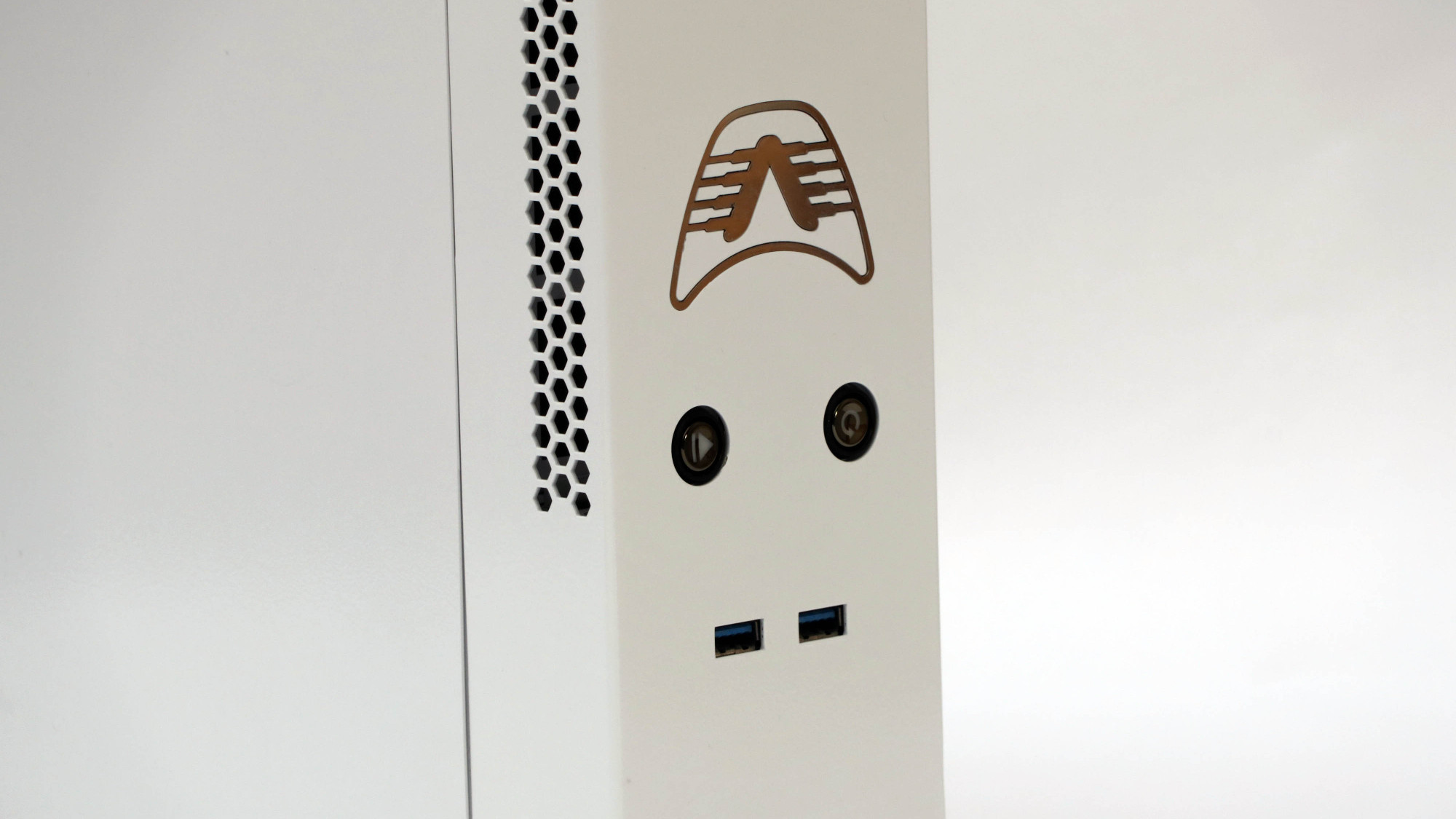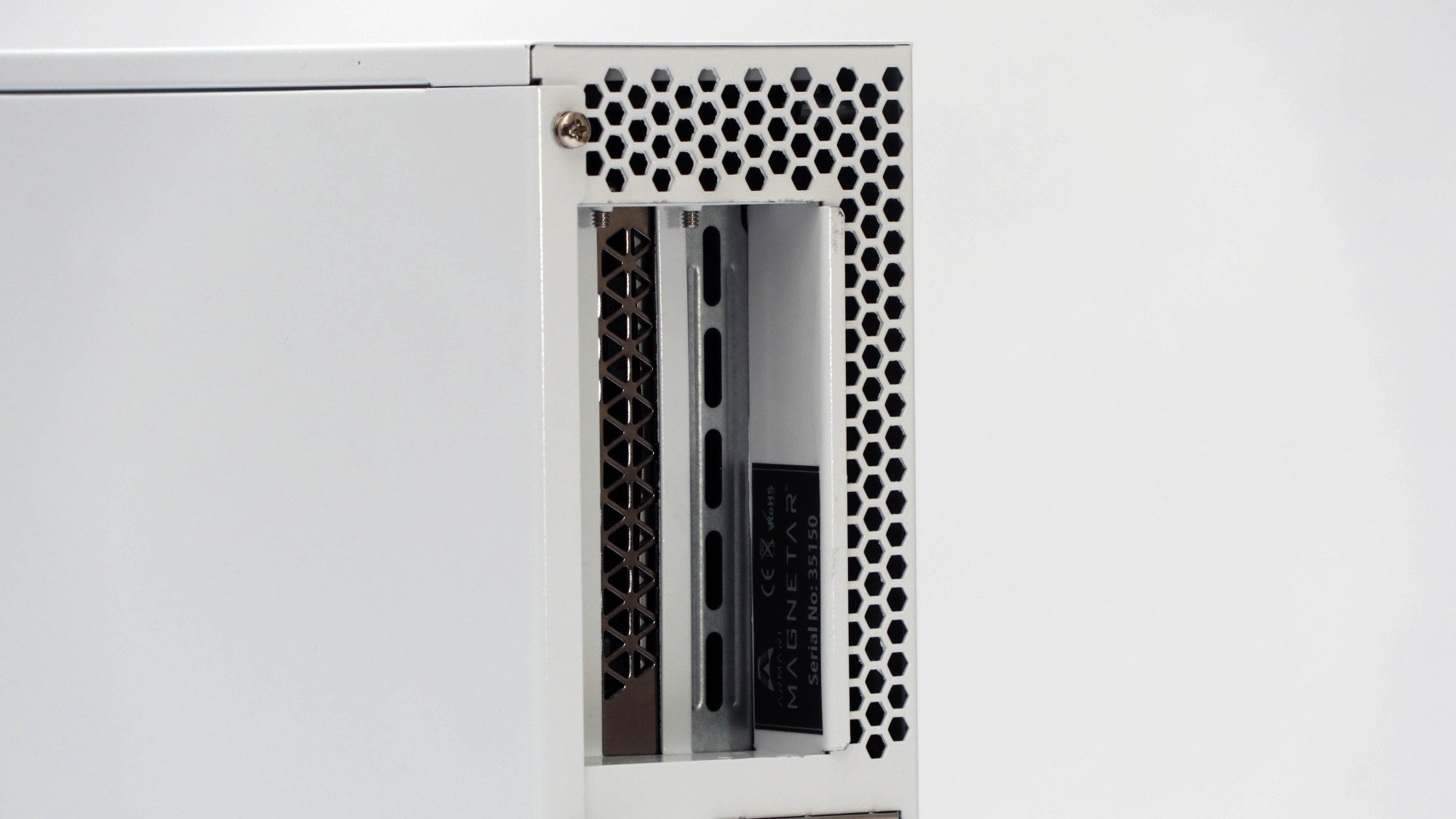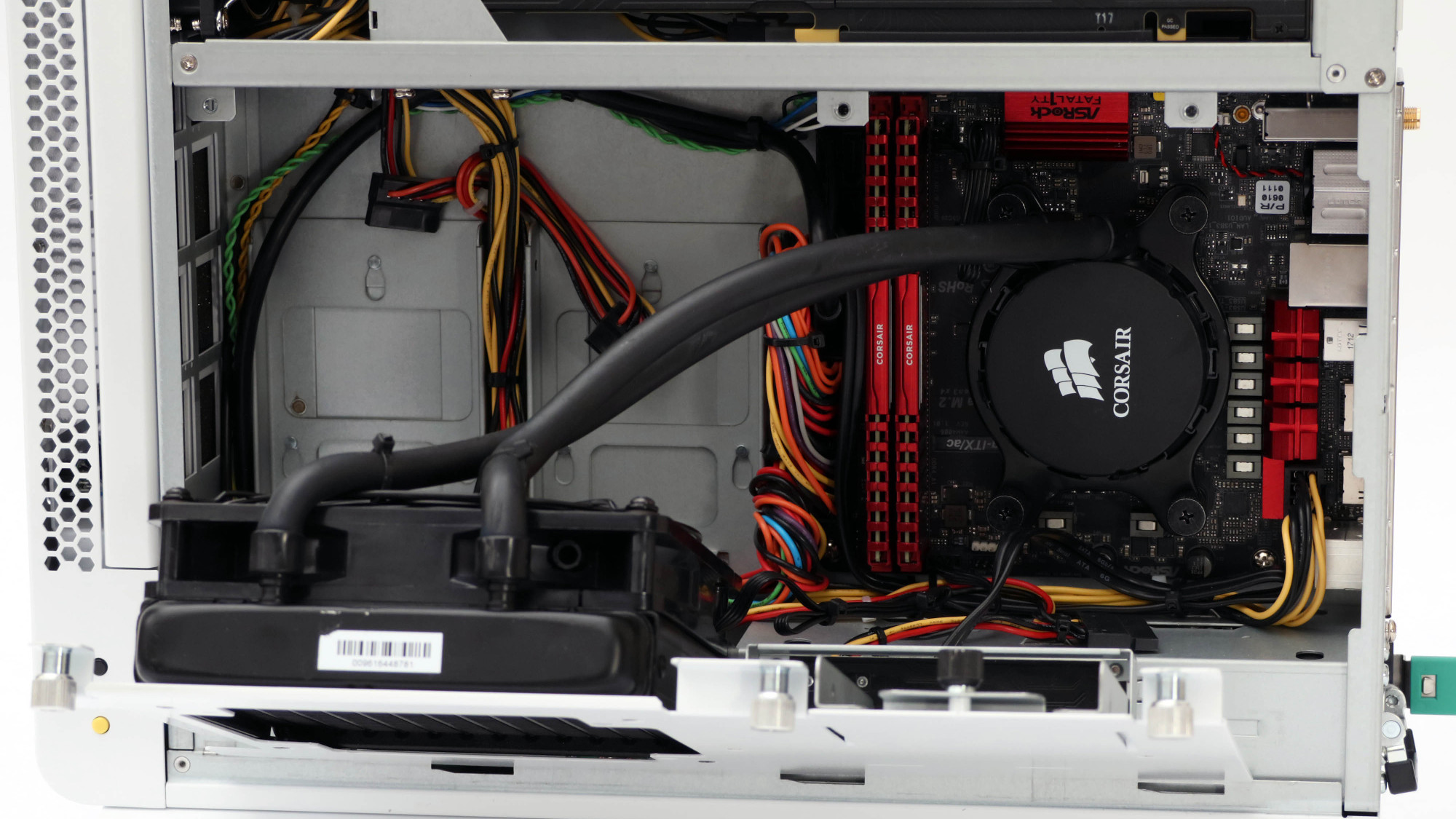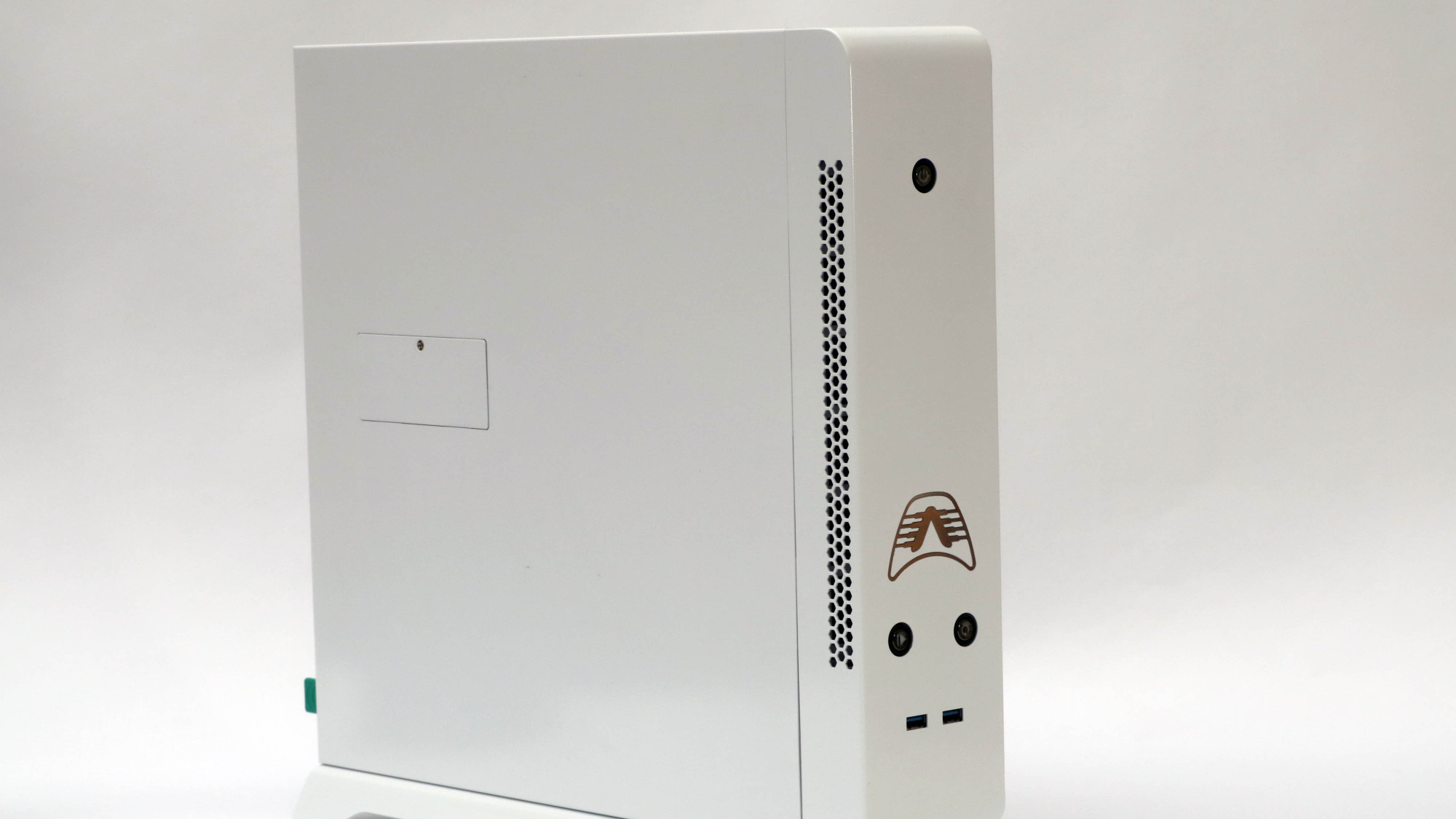Armari V25R-RA750G2 review: Ryzen 2 the top
Armari gives us our first taste of the second generation of AMD’s Ryzen processor, and it’s showing plenty of promise


The Armari V25R-RA750G2 shows that the second AMD Ryzen generation has lots to offer the workstation market, and it’s an amazingly compact chassis design too.
-
+
Fast multi-core performance; Loads of CUDA graphics processing; Amazingly compact chassis design; Great for VR content creation
-
-
Compact design adds cost; Consumer-grade graphics not ideal for some professional applications

When AMD released the Ryzen in the first quarter of 2017, it took many by surprise - including Intel. Although AMD had a few previous times in the sun, notably with the Athlon FX and Opteron, its CPUs hadn't been putting up much of a fight for years. Then the Ryzen 7 arrived, followed by the Threadripper, forcing Intel to rush out new products early to keep ahead. Now we have Ryzen 2, just a year later, and it promises to keep the pressure on. Our first look comes from Armari, in its dinky V25R-RA750G2 system.
Armari V25R-RA750G2: Processor and Memory
Our Armari sample came with the new top-end Ryzen 7, the 2700X, which replaces the 1800X. Like the latter, this is still an eight-core processor. The base clock has raised slightly to 3.7GHz from 3.6GHz, but the Turbo mode is improved quite a bit more to 4.35GHz from 4.1GHz, although the TDP is now 105W instead of 90W.
Armari has taken full advantage of the higher frequency ceiling by clocking the V25R's CPU permanently to 4.35GHz across all cores. Despite its small size, the V25R chassis has capable custom water cooling built in, so can cope with the temperature, and even supports the Ryzen Threadripper. Like the original Ryzen 7, the 2700X has a virtual threading system, so you get 16 threads from your eight cores, too.
Where the original Ryzen 7 officially supported 2,666MHz DDR4 memory, the second iteration ups the ante to 2,933MHz. However, Armari includes 3,200MHz memory clocked at this speed and fully tested. Armari has supplied two 16GB modules for a 32GB total, which take up both the slots on the ASRock Fatal1ty X370 Gaming-ITX/ac motherboard, although this is the maximum memory possible anyway.
Armari V25R-RA750G2: Graphics Acceleration
The V25R is a workstation aimed specifically at VR content creation. Amazingly, considering the case size, there's room for two 16x PCI Express slots at the top, using a riser from the board's single slot. The top section is three slots wide, so can support either two single-width cards (both running at 8x speed), or a single dual-width card running at 16x.

Although you could fit a professional graphics card in this system, the VR focus means that Armari has instead opted for a Zotac NVIDIA GeForce GTX 1080 Ti Blower. VR content creators prefer the consumer-grade graphics as this allows previewing of content more smoothly as it is being created. The V25R chassis also has an optional breakout box for the HTC Vive, to cater for this kind of user.
The GeForce GTX 1080 Ti is a very powerful graphics card, boasting 3,584 CUDA cores running at a base 1,480MHz but with a 1,582MHz Boost mode. There's 11GB of GDDR5X memory running at 11GHz on a 352-bit bus, providing 484GB/sec of bandwidth. All these figures are well beyond even a NVIDIA Quadro P5000, but of course as a consumer-grade card the GeForce GTX 1080 Ti is not supported by ISVs. Nevertheless, it will work just fine with most (but not all) applications, and has loads of GPGPU grunt on offer.
There are three DisplayPort 1.4 connections, plus a single HDMI 2.0b. The DisplayPorts can drive a screen at up to 7,680 x 4,320 at 60Hz. However, all this GPU capability does come with one drawback - this is a 250W card, so will consume a fair bit of power when running at full pelt.
Armari V25R-RA750G2: Storage
The V25R chassis has room for up to three 2.5in drives, with a caddy for one of them in the swing-out door. The door also hosts the custom water cooling radiator, and there are two more 2.5in bays directly behind where the radiator sits when in place. However, our sample only came with a single M.2 NVMe SSD, located in the slot on the rear of the motherboard. Although this side of the chassis can't be removed, there is a little panel to access the M.2 slot. In the early sample we were sent, which uses a case for the previous Ryzen, the panel didn't quite align, but production chassis will have a larger panel that will allow full access to the M.2 slot.

The NVMe SSD supplied will also be different in the production version of the V25R. Our sample came with a 1TB Samsung PM961, but this will be replaced by the just-released PM981. The PM961 promises 3,000MB/sec reading and 1,700MB/sec writing, but we found that CrystalDiskMark 6 actually registered better performance than this, with 3,282MB/sec reading and 1,775MB/sec writing. This is already one of the fastest NVMe SSDs we've seen, and the PM981 should be faster still.
Armari V25R-RA750G2: Chassis Design
We have already mentioned a few details of the V25R's chassis configuration in passing. This is a custom design by Armari specifically intended to pack as much desktop capability into a system that is both light and easy to transport, for tasks like VR demonstrations or on-site content creation. Every morsel of space is utilised, with the clever positioning of the three 2.5in drive spaces just the beginning.
The top of the chassis primarily contains the graphics card riser, with the cards sitting upright rather than horizontally. This area is not entirely straightforward to get into, however. You need to unscrew the door with the water cooling radiator and 2.5in drive caddy so that it can fold open, then unscrew the whole riser assembly to slide it out. But it is still quite incredible that a card as powerful as the GeForce GTX 1080 Ti will even fit in a case this small.
The processor, RAM and drive caddies are quite easy to get to, however, once the water cooling panel has swung open. The 750W power supply also slides out from the back easily, and is a server-grade unit. You can replace the PSU in a matter of seconds.
Armari V25R-RA750G2: Processor Performance
When the original Ryzen 7 was launched, it put the cat amongst the pigeons by providing an eight-core processor for the price of Intel's quad-cores (at the time). Although Intel has subsequently beefed up its equivalent range to six-core with the 4.7GHz Core i7-8700K, the 2700X still offers an advantage in multi-threaded tasks.

This is clear from the Maxon Cinebench R15 rendering result of 1,791, which beats the 8700K and comes close to what a more expensive eight-core Intel Core i7-7820X can muster. Similarly, the overall IT Pro media benchmarks result of 300 is ahead of any 8700K-based system we've seen, and comparable to the 7820X. Although the Ryzen 2700X's image editing result of 160 is behind the 8700K, thanks to the latter's clock speed advantage, it matches the 7820X, and the video encoding result of 298 is ahead of both, whilst the multi-tasking score of 348 beats the 8700K and is only slightly behind the 7820X.
The GeekBench 4 CPU scores tell a similar story. The single-core result of 5,016 is slightly behind the Dell Precision 5820 (https://www.itpro.com/hardware/30704/dell-precision-5820-review-a-solid-all-rounder-but-it-s-not-cheap), but the multi-core result or 26,706 is quite a way ahead.
Armari V25R-RA750G2: Graphics Performance
The V25R has very powerful graphics, but not optimised for professional applications. This is obvious from the rather varied SPECviewperf 12.1 results. The score of 128.09 in 3dsmax-05 is very similar to a Quadro P4000, and 170.59 in maya-04 is one of the highest we've seen with this viewset. But 56.85 in creo-01 and 69.58 in sw-03 are much more pedestrian, and 10.08 in snx-02 shows that this is not a great card for engineering visualisation or product design.
The score of 145.26 in the OpenGL portion of Cinebench R15 is decent, but we've seen a lot better from professional-grade graphics. However, with GFXBench 4, the scores of 2950.7 on screen and 23,422.6 offscreen with Car Chase plus 3,097.1 onscreen and 31,764 offscreen with Manhattan are the best we've seen. The GTX 1080 Ti is also a monster for GPGPU work, producing a whopping 5,688 in the OpenCL-based LuxMark 3.1, and 191.93 in CUDA-powered OctaneBench, showing that this card has at least 50 per cent more raw processing power than the professional-grade Quadro P5000.
Armari V25R-RA750G2: Verdict
The Amari V25R-RA750G2 brings out the best in the Ryzen 2700X. AMD is clearly continuing to keep the pressure on Intel, offering more multi-core capability for your money. The V25R isn't exactly cheap at 2,575 plus VAT, but it's a great feat of engineering, packing a huge amount into a tiny, well designed chassis. Small form factor workstations are supposed to be less powerful than full towers, but this one is just as capable.
Verdict
The Armari V25R-RA750G2 shows that the second AMD Ryzen generation has lots to offer the workstation market, and it’s an amazingly compact chassis design too.
| Processor: | 3.7GHz AMD Ryzen 2700X |
| RAM: | 32GB 3,200MHz DDR4 |
| Graphics: | 11GB GDDR5X Zotac NVIDIA GeForce GTX 1080 Ti Blower |
| Storage: | 1TB Samsung PM961 NVMe M.2 SSD |
| Operating System: | Windows 10 Professional 64-bit |
| Warranty: | 3 years (1st onsite, 2nd and 3rd RTB parts and labour) |
| Website: | www.armari.com |
Get the ITPro daily newsletter
Sign up today and you will receive a free copy of our Future Focus 2025 report - the leading guidance on AI, cybersecurity and other IT challenges as per 700+ senior executives
Dr James Morris has worked as a technology journalist for over 25 years, including spending nine years on the staff of market-leading computer magazine PC Pro, the last five of which were as the publication’s editor. He specialises in enterprise-grade software and hardware, with a particular focus on content creation. He launched a pioneering video channel for HEXUS.net in 2006 and ran the video reviews channel for TrustedReviews.com for four years. He also runs a successful online digital content and commercial video production company, t-zero communications Ltd.
Dr Morris is a prolific technology writer and contributes commercial content for major IT brands including AMD, BlackBerry, Dell, Cognizant, HP, and IBM. He published a book on artificial intelligence, Can Computers Create Art? in 2009. He is also an academic, and is currently Pathway Director of the MA, Interactive Journalism at City, University of London.
Previously, he was course leader for the BA in Web Media Production at Ravensbourne University. He has a PhD in Philosophy, Art and Social Thought from the European Graduate School in Switzerland, a Master's in Media Arts from the New School in New York, USA, and a Bachelor's in Social Anthropology from the London School of Economics.
Dr. Morris can be found on Twitter at @Cyberwest, or emailed at j@tzero.co.uk
-
 ‘Phishing kits are a force multiplier': Cheap cyber crime kits can be bought on the dark web for less than $25 – and experts warn it’s lowering the barrier of entry for amateur hackers
‘Phishing kits are a force multiplier': Cheap cyber crime kits can be bought on the dark web for less than $25 – and experts warn it’s lowering the barrier of entry for amateur hackersNews Research from NordVPN shows phishing kits are now widely available on the dark web and via messaging apps like Telegram, and are often selling for less than $25.
By Emma Woollacott Published
-
 Redis unveils new tools for developers working on AI applications
Redis unveils new tools for developers working on AI applicationsNews Redis has announced new tools aimed at making it easier for AI developers to build applications and optimize large language model (LLM) outputs.
By Ross Kelly Published
-
 Google layoffs continue with "hundreds" cut from Chrome, Android, and Pixel teams
Google layoffs continue with "hundreds" cut from Chrome, Android, and Pixel teamsNews The tech giant's efficiency drive enters a third year with devices teams the latest target
By Bobby Hellard Published